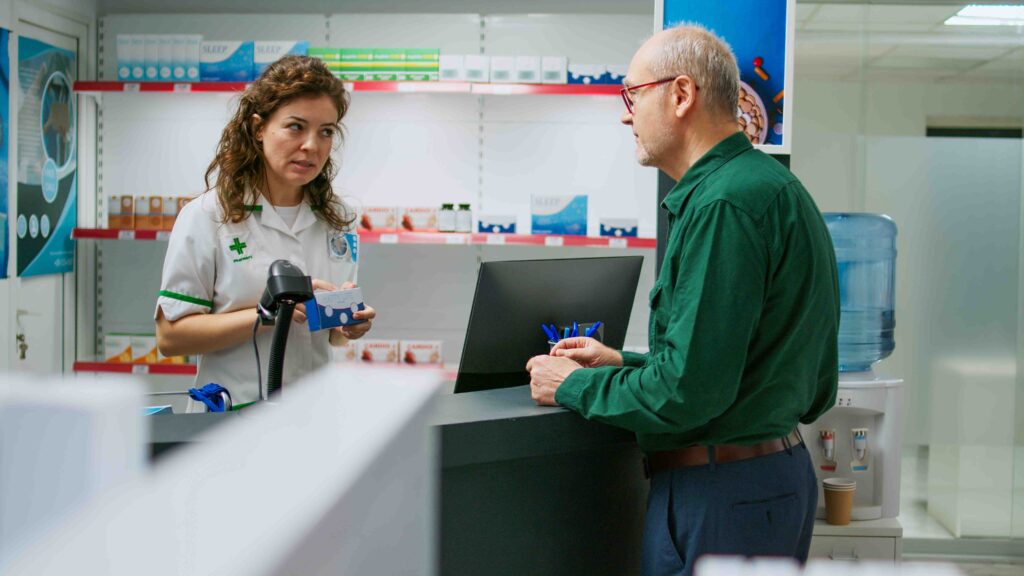2 North Cass Avenue Westmont, IL 60559
630-969-2043
2 North Cass Avenue Westmont, IL 60559
630-969-2043

Does Medicaid cover incontinence supplies? The short answer is: yes, in most states. Here’s a quick summary of essential points:
1. Medicaid often covers incontinence supplies such as pads, briefs, and pull-ons.
2. Coverage varies by state; always check your state’s specific policies.
3. Additional medical documentation may be required to qualify.
Medicaid is a state and federal program designed to help eligible low-income individuals and families with medical costs. While the exact benefits and eligibility criteria vary from state to state, most Medicaid plans do cover incontinence supplies. This can include items like absorbent underwear, bladder control pads, and more.
Note: Before you start, ensure that you meet your state’s Medicaid requirements. These generally include criteria for low-income families, pregnant women, individuals with disabilities, and recipients of Supplemental Security Income (SSI). Some states also offer “spend-down” programs for those with high medical expenses.
I’m Sazan Sylejmani, a seasoned Pharmacy Manager with in-depth experience in navigating Medicaid coverage for supplies, including incontinence products. My extensive background ensures you receive accurate and straightforward information to meet your healthcare needs.
In the next section, we’ll dig deeper into understanding Medicaid coverage for incontinence supplies.
Yes, Medicaid does cover incontinence supplies in most states. However, the specifics can vary widely. Medicaid is a joint federal-state program, meaning each state has its own rules and guidelines. Generally, incontinence supplies fall under the optional benefits category, which means states have the choice to cover them or not.
Medicaid covers various incontinence supplies, but the exact types and amounts can differ by state. Here’s a look at the common types of incontinence supplies that Medicaid might cover:
1. Disposable Briefs
These are adult diapers designed for maximum absorbency. They are ideal for those with heavy incontinence and come with secure fasteners for easy adjustment.
2. Protective Underwear
Also known as pull-ups, these products look like regular underwear but offer moderate to heavy absorbency. They are great for active individuals who prefer a more discreet option.
3. Bladder Control Pads
These pads are less bulky and are meant for light to moderate leakage. They stick to regular underwear with an adhesive strip and are available in gender-specific designs.
4. Booster Pads
These are additional pads that can be added to other incontinence products for extra absorbency. They don’t have a waterproof backing, so they need to be used with another product.
5. Underpads
These are absorbent pads placed on beds, chairs, or other surfaces to protect them from leaks. They are available in both disposable and washable options.
6. Wipes
Medicaid may cover wipes, which are essential for maintaining hygiene. These wipes are often larger and thicker than regular baby wipes.
7. Skin Care Products
Some Medicaid programs also cover creams, powders, and other skin care products to prevent irritation and maintain skin health.
To get incontinence supplies covered by Medicaid, you usually need:
State-Specific Guidelines
Coverage for incontinence supplies can vary significantly by state. For example, some states may cover supplies for both adults and children, while others may have age restrictions. As of 2019, approximately 45 states cover some incontinence supplies under Medicaid.
For the most accurate information, it’s best to check your state’s Medicaid website or contact a local Medicaid office. You can also consult with a medical supply provider that accepts Medicaid to help steer the specifics.

In the next section, we’ll outline the steps to secure Medicaid coverage for incontinence supplies, including the necessary documentation and how to find an approved supplier.
Securing Medicaid coverage for incontinence supplies involves several key steps. Following these steps carefully can help ensure you get the supplies you need without delays.
First, check with your state’s Medicaid program to confirm that you are eligible for coverage. Each state has different rules, so make sure to understand what your state covers.
Medicaid typically requires a prescription from a healthcare provider. This prescription must specify the type and quantity of incontinence supplies needed per month.
Your healthcare provider may need to submit several documents to verify the medical necessity of incontinence supplies. These documents include:
Not all suppliers accept Medicaid, so you need to find one that does. Once you’ve found an approved supplier, they can often help with the paperwork.
Submit all required documents to Medicaid for approval. Incorrect or incomplete submissions can delay or result in the denial of your request. Some suppliers, like MyMedSupplies, can handle this process for you.
Be aware of any limits to your Medicaid coverage for incontinence supplies. This includes monthly product limits or specific brands that are covered. Review the covered list in your state each year.
Medicaid may require periodic reevaluation to continue covering your incontinence supplies. Make sure to renew your coverage as needed to avoid lapses.
To get incontinence supplies covered, Medicaid requires specific documentation to prove medical necessity. Here’s what you’ll need:
By following these steps and ensuring you have all the necessary documentation, you can successfully secure Medicaid coverage for your incontinence supplies.
In the next section, we’ll explore the state-specific guidelines for Medicaid coverage of incontinence supplies.
Medicaid coverage for incontinence supplies can vary widely from state to state. While some states offer comprehensive coverage, others provide partial or no coverage. Understanding your state’s specific guidelines and eligibility criteria is essential for accessing the benefits you need.
Some states offer full coverage for incontinence supplies under Medicaid. This means that if you qualify, you can receive necessary supplies like disposable briefs, protective underwear, bladder control pads, and more.
Alabama
– Benefit Type: Fee-For-Service
– Requirements: Supplies must be medically necessary and prescribed by a doctor.
– More information
Alaska
– Benefit Type: Fee-For-Service
– Requirements: Supplies must be medically necessary and prescribed by a doctor.
– More information
Arizona
– Benefit Type: Fee-For-Service, Managed Care
– Requirements: Supplies must be medically necessary and prescribed by a doctor. Not covered for children under age 3.
– More information
Arkansas
– Benefit Type: Fee-For-Service
– Requirements: Supplies must be medically necessary and prescribed by a doctor. Not covered for children under age 3.
– More information
California
– Benefit Type: Fee-For-Service, Managed Care
– Requirements: Supplies must be medically necessary and prescribed by a doctor.
– More information
In some states, Medicaid coverage for incontinence supplies is limited or not available. These states might cover only certain types of supplies or have stricter eligibility requirements.
Connecticut
– Benefit Type: Fee-For-Service
– Requirements: Supplies must be medically necessary and prescribed by a doctor.
– More information
District of Columbia
– Benefit Type: Fee-For-Service, Managed Care
– Requirements: Supplies must be medically necessary and prescribed by a doctor. Not covered for children under age 4.
– More information
Delaware
– Benefit Type: Fee-For-Service, Managed Care
– Requirements: Supplies must be medically necessary and prescribed by a doctor. Not covered for children under age 4.
– More information
Colorado
– Benefit Type: Fee-For-Service, Managed Care
– Requirements: Supplies must be medically necessary and prescribed by a doctor.
– More information
Coverage for incontinence supplies under Medicaid is categorized as an optional benefit, meaning states are not required to provide it. However, most states recognize the importance of these supplies for individuals’ health and quality of life and choose to offer some level of coverage.
To qualify for Medicaid-covered incontinence supplies, you generally need to:
– Meet your state’s Medicaid eligibility requirements.
– Have a medical condition diagnosed by a physician that necessitates the use of incontinence supplies.
– Obtain a prescription or letter of medical necessity from your doctor.
Each state has its own guidelines and procedures for obtaining coverage. It’s crucial to consult your state’s Medicaid website or contact your local Medicaid office to get accurate and up-to-date information.
In the next section, we’ll answer some frequently asked questions about Medicaid and incontinence supplies.
To qualify for free incontinence supplies through Medicaid, you need to:
Medicaid can cover a variety of incontinence supplies, depending on your state and medical necessity. Commonly covered items include:
Applying for Medicaid coverage for incontinence supplies involves several steps:
Navigating Medicaid coverage for incontinence supplies can be complex, but understanding these steps can simplify the process. For more detailed guidance, consult your state’s Medicaid office or contact us at Westmont Pharmacy. We’re here to help you get the supplies you need.
Navigating Medicaid coverage for incontinence supplies can seem daunting, but understanding the key points can make the process much easier. Let’s recap:
Understanding these points can help you or your loved ones get the incontinence supplies you need without unnecessary hassle.
At Westmont Pharmacy, we are dedicated to helping you steer Medicaid coverage for incontinence supplies. Our knowledgeable staff is ready to assist you with every step, from verifying your coverage to ensuring you get the best products delivered to your door.
For more information and personalized assistance, visit our medical equipment rentals page today.

